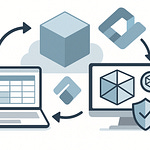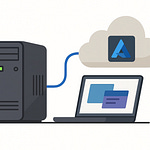Summary
Making your first Dynamics 365 Finance & Operations API call often feels like walking through a minefield: misconfigured permissions, the wrong endpoints, and confusing errors can trip you up before you even start. In this episode, I break down the process step by step so you can get a working API call with less stress and fewer false starts.
We’ll start with the essentials: registering your Azure AD app, requesting tokens, and calling OData endpoints for core entities like Customers, Vendors, and Invoices. From there, we’ll look at when you need to go beyond OData and use custom services, how to protect your endpoints with the right scopes, and the most common mistakes to avoid.
You’ll hear not just the “happy path,” but also the lessons learned from failed attempts and the small details that make a big difference. By the end of this episode, you’ll have a clear mental map of how the D365 API landscape works, what to do first, and how to build integrations that can survive patches, audits, and real-world complexity.
What You’ll Learn
How to authenticate with Azure AD and request a valid access token
The basics of calling OData endpoints for standard CRUD operations
When and why to use custom services instead of plain OData
Best practices for API security: least privilege, error handling, monitoring, and throttling
Common mistakes beginners make — and how to avoid them
Guest
No guest this time — just me, guiding you through the process.
Full Transcript
You’ve got D365 running, and management drops the classic: “Integrate it with that tool over there.” Sounds simple, right? Except misconfigured permissions create compliance headaches, and using the wrong entity can grind processes to a halt. That’s why today’s survival guide is blunt and step‑by‑step.
Here’s the roadmap: one, how to authenticate with Azure AD and actually get a token. Two, how to query F&O data cleanly with OData endpoints. Three, when to lean on custom services—and how to guard them so they don’t blow up on you later.
We’ll register an app, grab a token, make a call, and set guardrails you can defend to both your CISO and your sanity. Integration doesn’t need duct tape—it needs the right handshake. And that’s where we start.
Meet the F&O API: The 'Secret Handshake'
Meet the Finance and Operations API: the so‑called “secret handshake.” It isn’t black magic, and you don’t need to sacrifice a weekend to make it work. Think of it less like wizardry and more like knowing the right knock to get through the right door. The point is simple: F&O won’t let you crawl in through the windows, but it will let you through the official entrance if you know the rules.
A lot of admins still imagine Finance and Operations as some fortress with thick walls and scary guards. Fine, sure—but the real story is simpler. Inside that fortress, Microsoft already built you a proper door: the REST API. It’s not a hidden side alley or a developer toy. It’s the documented, supported way in. Finance and Operations exposes business data through OData/REST endpoints—customers, vendors, invoices, purchase orders—the bread and butter of your ERP. That’s the integration path Microsoft wants you to take, and it’s the safest one you’ve got.
Where do things go wrong? It usually happens when teams try to skip the API. You’ve seen it: production‑pointed SQL scripts hammered straight at the database, screen scraping tools chewing through UI clicks at robot speed, or shadow integrations that run without anyone in IT admitting they exist. Those shortcuts might get you quick results once or twice, but they’re fragile. They break the second Microsoft pushes a hotfix, and when they break, the fallout usually hits compliance, audit, or finance all at once. In contrast, the API endpoints give you a structured, predictable interface that stays supported through updates.
Here’s the mindset shift: Microsoft didn’t build the F&O API as a “bonus” feature. This API is the playbook. If you call it, you’re supported, documented, and when issues come up, Microsoft support will help you. If you bypass it, you’re basically duct‑taping integrations together with no safety net. And when that duct tape peels off—as it always does—you’re left explaining missing transactions to your boss at month‑end close. Nobody wants that.
Now, let’s get into what the API actually looks like. It’s RESTful, so you’ll be working with standard HTTP verbs: GET, POST, PATCH, DELETE. The structure underneath is OData, which basically means you’re querying structured endpoints in a consistent way. Every major business entity you care about—customers, vendors, invoices—has its shelf. You don’t rummage through piles of exports or scrape whatever the UI happens to show that day. You call “/Customers” and you get structured data back. Predictable. Repeatable. No surprises.
Think of OData like a menu in a diner. It’s not about sneaking into the kitchen and stirring random pots. The menu lists every dish, the ingredients are standardized, and when you order “Invoice Lines,” you get exactly that—every single time. That consistency is what makes automation and integration even possible. You’re not gambling on screen layouts or guessing which Excel column still holds the vendor ID. You’re just asking the system the right way, and it answers the right way.
But OData isn’t your only option. Sometimes, you need more than an entity list—you need business logic or steps that OData doesn’t expose directly. That’s where custom services come in. Developers can build X++‑based services for specialized workflows, and those services plug into the same API layer. Still supported, still documented, just designed for the custom side of your business process.
And while we’re on options, there’s one more integration path you shouldn’t ignore: Dataverse dual‑write. If your world spans both the CRM side and F&O, dual‑write gives you near real‑time, two‑way sync between Dataverse tables and F&O data entities. It maps fields, supports initial sync, lets you pause/resume or catch up if you fall behind, and it even provides a central log so you know what synced and when. That’s a world away from shadow integrations, and it’s exactly why a lot of teams pick it to keep Customer Engagement and ERP data aligned without hand‑crafted hacks.
So the takeaway is this: the API isn’t an optional side door. It’s the real entrance. Use it, and you build integrations that survive patches, audits, and real‑world use. Ignore it, and you’re back to fragile scripts and RPA workarounds that collapse when the wind changes. Microsoft gave you the handshake—now it’s on you to use it.
All of that is neat—but none of it matters until you can prove who you are. On to tokens.
Authentication Without Losing Your Sanity
Authentication Without Losing Your Sanity. Let’s be real: nothing tests your patience faster than getting stonewalled by a token error that helpfully tells you “Access Denied”—and nothing else. You’ve triple‑checked your setup, sacrificed three cups of coffee to the troubleshooting gods, and still the API looks at you like, “Who are you again?” It’s brutal, but it’s also the most important step in the whole process. Without authentication, every other clever thing you try is just noise at a locked door.
Here’s the plain truth: every single call into Finance and Operations has to be approved by Azure Active Directory through OAuth 2.0. No token, no entry. Tokens are short‑lived keys, and they’re built to keep random scripts, rogue apps, or bored interns from crashing into your ERP. That’s fantastic for security, but if you don’t have the setup right, it feels like yelling SQL queries through a window that doesn’t open.
So how do you actually do this without going insane? Break it into three practical steps:
Register the app in Azure AD. This gives you a Client ID, and you’ll pair it with either a client secret or—much better—a certificate for production. That app registration becomes the official identity of your integration, so don’t skip documenting what it’s for.
Assign the minimum API permissions it needs. Don’t go full “God Mode” just because it’s easier. If your integration just needs Vendors and Purchase Orders, scope it exactly there. Least privilege isn’t a suggestion; it’s the only way to avoid waking up to compliance nightmares down the line.
Get admin consent, then request your token using the client credentials flow (for app‑only access) or delegated flow (if you need it tied to a user). Once Azure AD hands you that token, that’s your golden ticket—good for a short window of time.
For production setups, do yourself a favor and avoid long‑lived client secrets. They’re like sticky notes with your ATM PIN on them: easy for now, dangerous long‑term. Instead, go with certificate‑based authentication or managed identities if you’re running inside Azure. One extra hour to configure it now saves you countless fire drills later.
Now let’s talk common mistakes—because we’ve all seen them. Don’t over‑grant permissions in Azure. Too many admins slap on every permission they can find, thinking they’ll trim it back later. Spoiler: they never do. That’s how you get apps capable of erasing audit logs when all they needed was “read Customers.” Tokens are also short‑lived on purpose. If you don’t design for refresh and rotation, your integration will look great on day one and then fail spectacularly 24 hours later.
Here’s the practical side. When you successfully fetch that OAuth token from Azure AD, you’re not done—you actually have to use it. Every API request you send to Finance and Operations has to include it in the header: Authorization: Bearer
OData Endpoints: Your New Best Friend
OData endpoints: your new best friend. Picture this as the part where the API stops being a locked door and starts being an organized shelf. Up until now, it’s all been about access—tokens, scopes, and proving you should be in the room. With OData, you’re not sneaking through windows or pawing through random SQL tables; you’ve got clean, documented endpoints lined up: Customers, Vendors, Invoices, Purchase Orders, all waiting politely at predictable URLs. You need customers? Hit /Customers. Invoices? /VendorInvoices. It’s standardized, not guesswork.
Contrast that with the “Export to Excel” culture we’ve all lived through. Hit that button and in seconds your data is outdated. The moment a record changes—updated address, new sales order—that exported file lies to you. With OData, you’re not emailing aging snapshots; you’re pulling live transactional data. Plug that into Power BI and suddenly your dashboards reflect what’s happening now, not what happened last week. It’s the difference between staring at a Polaroid and watching a livestream. Guess which one your CFO trusts when arguing about current numbers.
The real power sits in CRUD: Create, Read, Update, Delete. In OData terms: POST, GET, PATCH, DELETE. A GET reads records, POST creates new ones, PATCH updates, and DELETE… deletes (use with caution). It’s simple: four verbs for almost every transactional integration you’ll need. No voodoo, no obscure syntax—just basic database operations through a consistent REST layer.
What makes OData so admin-friendly is its boring URL structure—in the best possible way. Every endpoint follows the same pattern: base service root plus entity set. For example: https://
When OData Isn’t Enough: Enter Custom Services
When standard OData calls can’t handle what the business is asking for, that’s your signal to reach for custom services. OData works beautifully for straightforward CRUD operations—create, read, update, delete. But the moment you need to enforce server-side rules, run multi‑table transactions, or execute workflows that depend on conditional logic, OData bows out. And that’s by design. Microsoft doesn’t want you bending OData into a pretzel of business logic. For those scenarios, the right tool is a custom service.
Here’s the rule of thumb that keeps you sane: stick with OData for standard entity operations—Customers, Vendors, Invoices, Sales Orders. The second you need processes that think—currency conversions that depend on rate tables, production workflows that involve multiple entities, validations that require business rules—shift to a custom service. These services let you expose X++ logic on the server side as REST or SOAP endpoints, giving external systems a controlled way to call into F&O without letting them rummage through everything inside.
Technically, a custom service is just code written in X++, wrapped and published as an endpoint. Your developers pick what gets exposed, and F&O enforces guardrails so it doesn’t become a free‑for‑all. These endpoints can be REST or SOAP, depending on the integration need. That flexibility is important because it means you can tailor the service for your process while still using supported, documented channels. No fragile side‑scripts, no database hacks, no Excel exports duct‑taped together.
Why bother with the extra work? Because companies that ignore this path usually invent bad workarounds. I’ve seen teams feed CSV dumps into staging tables, or strap RPA bots to screens just to brute‑force workflows that OData couldn’t handle natively. It might work once, but the moment someone changes a field in production, the whole thing topples—and you spend a weekend mopping up the mess. Badly scoped hacks don’t just fail, they fail hard.
Custom services, when done right, flip that story. They let you package business logic behind a clean, documented interface. Finance and Operations does the heavy lifting—security, data integrity, lifecycle management—while you decide the contract: what inputs get accepted, what outputs get returned. By keeping that contract narrow and explicit, you prevent integrators from abusing it or slipping in demands you never signed up to handle. And when compliance comes calling, you’ve got an audited, officially supported endpoint to point to, not a Frankenstein script running on someone’s laptop.
Of course, with this power comes the risk of shooting yourself in the foot. Poorly scoped services can expose way too much, hand out over‑broad permissions, or bypass validation rules. If you build one carelessly, you’ve just made your data more fragile and opened up a big security hole. The fix is simple but non‑negotiable: governance. Write services with narrow contracts. Document the input and output shapes. Set explicit scopes in Azure AD so tokens can only touch what they’re meant to. Validate and sanitize every incoming payload so malformed data can’t poison your workflow. And for the love of uptime, add automated test coverage before you push it to production.
When you follow those patterns, custom services don’t expand your attack surface—they shrink it. Instead of random teams inventing hacks because IT said “no,” the business gets official, supported endpoints to run their logic. You’re not the department of roadblocks anymore; you’re the team providing clear, auditable integration paths. That’s a massive difference when auditors sniff around or when the CFO asks why a workflow failed.
To make it concrete, here are a few scenarios where OData isn’t the answer and a custom service is the way forward: multi‑row currency conversions that must calculate atomically, unit conversion rules that change by region and vendor, or orchestrated workflows—think production orders—that require multiple tables to update together as one transaction. Those aren’t “give me some fields” moments. Those are “apply critical business logic server‑side and guarantee consistency” moments. And that’s exactly what custom services were built to handle.
At the end of the day, OData and custom services aren’t competing tools. They’re complementary. OData handles the bulk of your integration needs cleanly. Custom services exist for the heavy, conditional, rules‑driven processes where OData was never intended to tread. Use each for what it’s designed to do, and you avoid the duct‑taped chaos that keeps admins up at night.
And now comes the part that many teams skip—the guardrails. Because even the cleanest custom service or OData integration can spiral into chaos if you don’t put limits in place. This is where discipline matters, and it’s the part future you will definitely thank you for.
Admin Survival Guide: Guardrails and Best Practices
Admin Survival Guide: Guardrails and Best Practices. If you’ve made it this far, you already know the mechanics—tokens, endpoints, custom services. But let’s be honest: the real war stories don’t come from how someone fetched a record. They come from what happens when nobody set guardrails and an integration bulldozes production like a rogue forklift. This section is about the practices that keep you from starring in that horror show.
Think of it as a survival checklist. These aren’t nice-to-haves; they’re the basic moves that separate controlled integrations from support tickets that double as bedtime horror stories. And because memory fades when you’re tired, I’ll keep them short and sharp so you can remember them when it counts:
One. Least privilege. Apps, users, bots—nobody gets more than they need. Ever. Tokens leak, configs drift, scripts misfire, and if your scopes are too broad, one accident turns small into catastrophic. Tight scopes contain damage.
Two. Role-based access. Don’t play bartender mixing custom cocktails of permissions for every app. Define standard roles. Map scopes to clear responsibilities. Stick to the recipe. That makes audits easier and blocks the “just give me everything” excuses.
Three. Always test in UAT before production. Yes, the deadlines scream. Yes, some manager will say, “Just push it live.” Ignore them. Unchecked API calls in production lead to massive data corruption—and then you’re spending weekends fixing fake invoices.
Four. Error handling and alerts. Silent failures rot your data like termites in the foundation. Build in proper logging, capture error codes, and send alerts. If an API crashes, you should know instantly—what happened, where, and why—before the business calls you in a panic.
Five. Monitoring. Don’t just watch when something breaks—measure continuously. Use Azure Monitor and Application Insights to trace API performance, request volume, and failures. For F&O specifically, the Lifecycle Services (LCS) diagnostic tools give you dedicated logs and telemetry for system health. That visibility is not optional; it’s the only way to stop small cracks from growing under your feet.
Six. Respect throttling. Microsoft enforces API call limits, and if you push past, you’ll see HTTP 429 “too many requests.” If you didn’t bake in retry logic with exponential backoff, your integrations collapse right when they’re needed most. Build those guardrails from day one so volume spikes don’t take you offline.
Seven. Documentation. I know—boring. But when the original builder is on vacation or gone for good, you need a map. At minimum, write a one-page runbook per integration that lists: the Azure AD app name, the scopes granted, the endpoints used, the refresh schedule, and rollback steps. That’s minutes now to prevent hours later.
And for dual-write, the governance bar is even higher. This isn’t just syncing a customer once; it’s live, two-way mapping between ERP and Dataverse. Treat those mappings like nuclear launch codes. Dual-write gives you near real-time syncs, plus initial data migration, built-in pause/play switches, and combined error logs. But those features only save you if you set rules: always test mappings in a non-production environment, review every configuration item, and monitor those logs daily once live. A single unchecked mapping can poison both systems at once—don’t let that be your Tuesday.
If you follow this checklist, integrations stop being risky science experiments. They become controlled pipelines you can explain to auditors, to security, and to your own future self. Eight months from now, when you’ve forgotten why you scoped a token a certain way, your runbook will save you from rediscovery hell. When traffic spikes on month-end and you hit call limits, your exponential backoff will keep things running instead of locking you out. And when compliance comes knocking, you show clean roles, documented scopes, and monitored logs instead of sweating through your shirt.
These are the moves that keep chaos from creeping into your environment. They don’t slow you down; they buy you peace of mind and credibility with leadership. And that’s worth more than another weekend cleaning up scripts gone rogue.
Which brings us to the point: surviving your first D365 API call isn’t based on luck. It’s whether you know these guardrails exist—and whether you had the discipline to use them.
Conclusion
Conclusion time. Let’s boil this whole thing down so it actually sticks. First: authentication is non-negotiable—register the app, scope it tight, keep tokens under control. Second: OData is your default workhorse—CRUD for entities, $filter/$select for performance, $top/$skip for paging. Third: when you need business rules, multi-table transactions, or conditional workflows, step up to custom services—and always wrap them in guardrails.
If this saved you at least one helpdesk ticket, do me a solid: subscribe to the podcast and leave a review. I spend hours building these guides, and your support keeps them coming.
One more micro-action before you bail: pause and jot down the endpoint or integration in F&O you dread most. Then, register an Azure AD app for it in a test environment. Better to break it safely now than watch it explode later.











